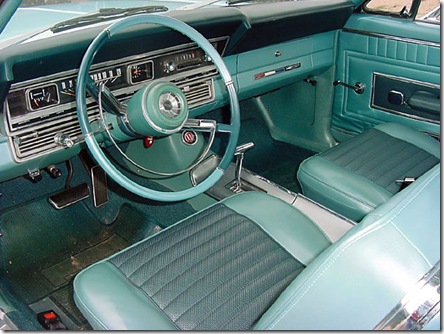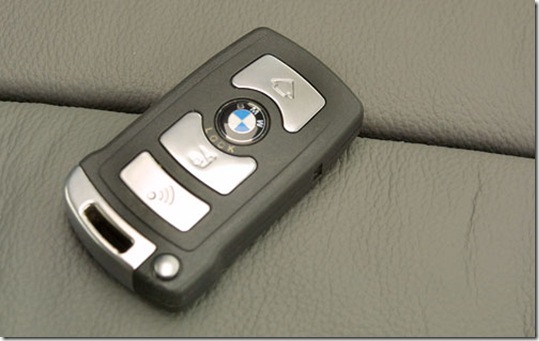Car, Drive
 By now you may have seen the commercials for Ford’s line of cars featuring Microsoft Sync, a music and mobile phone platform for automobiles. If not, you can view one here. It chronicles the embarrassment of people who find that treadmills, doors, and curtains do not respond to their voice the way their car does. While I like the concept of Bluetooth capability in cars, and I think voice commands are a safety enhancement over trying to dial a phone or search for a CD while driving, I sometimes wonder if our cars are becoming too electronic and computerized, to the point that safety could be compromised. I actually also wonder if some cars are just becoming too complex.
By now you may have seen the commercials for Ford’s line of cars featuring Microsoft Sync, a music and mobile phone platform for automobiles. If not, you can view one here. It chronicles the embarrassment of people who find that treadmills, doors, and curtains do not respond to their voice the way their car does. While I like the concept of Bluetooth capability in cars, and I think voice commands are a safety enhancement over trying to dial a phone or search for a CD while driving, I sometimes wonder if our cars are becoming too electronic and computerized, to the point that safety could be compromised. I actually also wonder if some cars are just becoming too complex.
As vehicles become increasingly integrated with advanced technology, the importance of proper maintenance and repair cannot be overstated. As cars evolve, the potential for electronic malfunctions can rise, making it critical to have a trusted garage for repairs. This is where a reliable service center like Pete’s Garage comes into play. Skilled technicians there are equipped not just to handle routine maintenance, but also to diagnose and repair the sophisticated electronic systems that newer vehicles rely on. You have to work with experts that know how to handle obsolete electronic parts. Regular check-ups are essential to ensure that all systems are functioning optimally, minimizing the risk of unexpected breakdowns.
For those looking to personalize their driving experience and maintain simplicity amidst technological advancements, accessories such as a custom steering wheel offer a practical solution. Tesla owners, in particular, can benefit from steering wheels designed to match their unique preferences and driving style. Options are available from specialized providers like Tesla Accessories, allowing drivers to choose from a variety of materials and designs that enhance both aesthetics and comfort. These custom solutions ensure that while vehicles may become more complex, the core driving experience remains tailored and intuitive.
When it comes to purchasing a car, these technological advancements play a significant role in the decision-making process. Potential buyers often weigh the benefits of modern features against concerns about reliability and maintenance. This is where reputable car dealers come into play, providing valuable insights and options. For instance, if you’re considering a pre-owned luxury vehicle, an option like an audi uk used car might offer a blend of sophisticated technology and reliability. These models are known for their durability and performance, making them a worthy consideration for those who appreciate advanced features without the worry of excessive complexity.
It used to be you could just get in a car, turn the key, and drive. For the most part, there wasn’t a lot of difference among various makes and models, except between stick shift and automatic. Now some cars are so fancy they practically require lessons just to start the thing. Take my husband’s new car, for example. For starters, the key is basically a rectangular fob that is inserted into a slot in the dashboard. You then touch the start button to start the car. When you arrive at your destination, you don’t put the gearshift in park – you push the park button and it does it for you. (Oh, and to put it into reverse, you push the gearshift forwards – how counterintuitive is that?). You then have to push the stop button (which is also the start button) in order to turn the vehicle off. I can’t see my in-laws driving this car any time soon, if ever. They just don’t function that well with technology. It’s certainly not the first car you’d want to drive in an emergency situation. “Here, take my rectangular piece – my car’s over there!”.
It doesn’t stop there. This vehicle has Bluetooth integration, as well as an iPod hookup, all of which is very handy. My husband spends a lot of time driving for his job; this would appear to make it easier and safer for him to place and receive calls while driving, rather than trying to drive and dial at the same time. This is all controlled by a knob next to the gearshift, with which you can scroll through contacts in your phone, songs in your iPod, or enter an address in the navigation system, all while driving. It seems, however, like we’ve replaced one distraction with another. You’re no longer looking at your phone or shuffling through CDs, but you’re still focusing on the dashboard instead of the road, trying to find the closest Starbucks, the phone number for your next appointment, or your favorite song out of hundreds on the iPod. Also, since one knob controls all these functions, you have to look at what’s on the screen to select the appropriate function. Is this really any safer?
Another “enhancement” I’ve noticed in some cars is the ability to park themselves. Well, I once watched someone attempt to parallel park on a street in Washington DC by pulling in front end first. By the look of puzzlement on her face, I could tell she was wondering how the heck she was going to get the back end of the car into the space. She could have used this technology. In reality, though, do you really want your car to take over the thinking for you? And what happens if the technology fails? Will you be stuck in the middle of a lane, horns around you blaring, while you try to remember how to parallel park?
My biggest worry, however, is whether we’ve come to rely on computers too much. What happens if one of these computers locks up? Do you pull over to the side of the road and restart your car to reboot your computer? How many computers are waiting to lock up in there? I have a colleague with a Prius, who says he was told it has 14 separate computers operating onboard. Toyota can’t tell him how many have to fail before the car stops working. That’s why he has roadside assistance.



